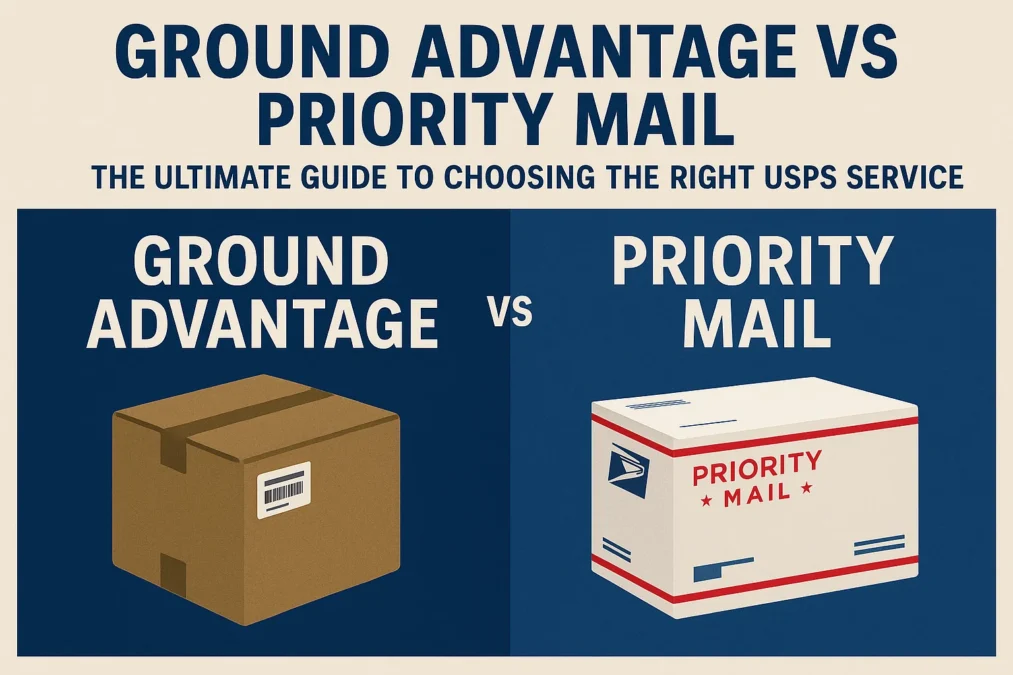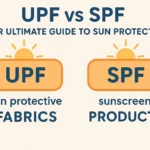Navigating the world of shipping can feel like deciphering a secret code. You just want to get your package from point A to point B safely, affordably, and on time. But with a myriad of options from the United States Postal Service (USPS), making the right choice isn’t always straightforward. For years, the go-to decision for many was between the slower, more economical Parcel Select (or First-Class Package for smaller items) and the faster, more feature-rich Priority Mail. But in the summer of 2023, USPS shook things up with a major consolidation, retiring several services and launching a new, streamlined option.
This change has left many shippers, from small business owners to casual eBay sellers, asking one fundamental question: Ground Advantage vs Priority Mail—which one should I choose? The answer isn’t a simple one-size-fits-all. It depends entirely on your package’s specifics and your priorities for cost, speed, and included features. This comprehensive guide will dive deep into both services, stripping away the confusion and giving you the clear, actionable knowledge you need to become a shipping expert. We’ll compare everything from delivery timelines and price points to insurance coverage and free supplies, ensuring you never overpay or under-deliver again.
Understanding the USPS Landscape: A New Era of Shipping
To truly understand the ground advantage vs priority mail debate, we need a little context. Before July 2023, USPS’s ground shipping ecosystem was fragmented. You had First-Class Package Service for lightweight items under one pound, Parcel Select Ground for heavier packages, and Retail Ground for larger items over a certain size mailed at a Post Office. This system worked, but it was confusing for customers and inefficient for USPS to manage.
Enter USPS Ground Advantage. This new service wasn’t just a rebranding; it was a strategic consolidation. Ground Advantage merged First-Class Package Service, Parcel Select Ground, and Retail Ground into a single, unified ground shipping product. The goal was to simplify the customer experience, improve reliability with more predictable delivery times, and create a more competitive offering against giants like FedEx Ground and UPS Ground. So, when you’re looking at Ground Advantage, you’re looking at the new standard for USPS ground shipping, designed to be a straightforward, economical workhorse for a vast range of packages.
What is USPS Ground Advantage? The New Standard for Ground Shipping
USPS Ground Advantage is now the foundation of USPS’s economy shipping services. It’s designed for shippers whose top priority is cost savings and who are comfortable with a slightly longer transit time. It leverages the USPS’s extensive nationwide network for final delivery, often being the service that handles the “last mile” for other carriers.
This service covers a wide range of package weights and sizes, accepting packages up to 70 lbs and 130 inches in combined length and girth. One of its most significant perks is that it includes built-in insurance coverage up to $100 at no extra cost, something its predecessor, Parcel Select, lacked. It also offers package tracking and, for Commercial Pricing users (those shipping through platforms like Pirateship, Shopify, or eBay), free USPS Package Pickup. When considering ground advantage vs priority mail, think of Ground Advantage as the reliable, budget-friendly option that gets the job done without the frills of expedited air service.
What is Priority Mail? The Speedy and Feature-Packed Workhorse
Priority Mail is the USPS’s flagship expedited shipping service. For decades, it has been the go-to choice for shippers who need their packages to arrive quickly, typically within 1-3 business days. Unlike Ground Advantage, which travels via ground transportation, Priority Mail shipments often move by air, which is the primary reason for its faster delivery speeds.
Beyond speed, Priority Mail is known for its value-added features. It includes up to $100 of built-in insurance, just like Ground Advantage, but it also offers a huge advantage: a wide selection of free packaging supplies. From Flat Rate boxes and envelopes where you can ship anything that fits for one price to regional rate boxes that can offer savings based on destination, these free supplies are a major draw. Furthermore, Priority Mail service standards are generally more consistent and faster than ground services, making it ideal for time-sensitive documents, perishable goods, or simply when a customer expects fast delivery.
Key Differences Between Ground Advantage and Priority Mail
The core of the ground advantage vs priority mail decision hinges on a few critical differences. Understanding these will allow you to quickly assess which service is the best fit for any given shipment you need to make.
The most glaring difference is the method of transport and the resulting delivery speed. Priority Mail is an air-based, expedited service. Your package is hustled onto planes to cross the country quickly, aiming for a 1-3 business day delivery window. Ground Advantage, as its name implies, travels exclusively by ground—via trucks and vans. This means its delivery timeline is longer, typically ranging from 2-5 business days within the continental U.S. This speed differential is the single biggest factor influencing the price and is the first thing you should consider.
Another major differentiator is the availability of free packaging. This is a huge perk for businesses and frequent shippers. Priority Mail offers a whole suite of free boxes, envelopes, and tubes. You can order them online from the USPS website and have them delivered to your door at no charge. The Flat Rate option is particularly popular for heavy, dense items because the price is determined by the box size, not the weight (as long as it fits under the 70 lb limit). Ground Advantage does not come with any free USPS-branded packaging. You are responsible for providing your own box, poly mailer, or envelope, which adds to your material cost, albeit a small one.
Delivery Speed and Transit Times: A Race of Air vs. Ground
When you’re weighing ground advantage vs priority mail, the question of “How fast will it get there?” is paramount. The difference in transit time is not just a minor detail; it’s the fundamental characteristic that defines each service.
Priority Mail’s service standard is a承诺d 1-3 business days for most domestic destinations. While not always a guaranteed delivery date, this standard is highly reliable for the vast majority of shipments. A package shipped from New York to California via Priority Mail will often arrive in 3 days. This speed is achieved because it bypasses much of the ground network and flies directly to a major sorting facility near the destination. For urgent documents, time-sensitive contracts, or last-minute gifts, this accelerated timeline is worth every penny.
In contrast, Ground Advantage operates on a 2-5 business day standard for the contiguous United States. It’s important to remember that these are standard times, and to more remote or rural areas, it can sometimes take longer. A cross-country shipment from Seattle to Miami will likely take the full five days as it makes its way across the country on trucks. This service is perfect for items that are not urgent—like a book you sold on Amazon, a batch of products for your Etsy store, or sending your cousin their birthday present a week early. The trade-off for the slower speed is significant cost savings, which we will explore next.
Cost and Pricing Comparison: Where the Rubber Meets the Road
For most shippers, the bottom line is, well, the bottom line. Cost is often the deciding factor in the ground advantage vs priority mail dilemma. The general rule is simple: you pay a premium for speed. Priority Mail, with its air-based transportation, is almost always more expensive than Ground Advantage for the same package.
However, the pricing structures have nuances. Ground Advantage pricing is primarily based on the distance between the origin and destination zip codes (the “zone”) and the weight of the package. The farther and heavier it is, the more it costs. Priority Mail pricing also uses weight and zones, but it introduces a wildcard: Flat Rate and Regional Rate boxes. If you can fit a heavy item into a Medium or Large Flat Rate box, it can often be cheaper than both Ground Advantage and zoned Priority Mail pricing. This is why it’s crucial to use a shipping calculator for every package.
For example, a 5-pound package shipping from Chicago to Los Angeles would cost significantly less with Ground Advantage than with a standard Priority Mail rate. But if that same 5-pound package was a dense collection of metal parts that could fit into a Priority Mail Medium Flat Rate Box, the Flat Rate price might suddenly be competitive with or even cheaper than the Ground Advantage price. Always check both options!
Ground Advantage vs Priority Mail: Comparison Table
| Feature | USPS Ground Advantage | USPS Priority Mail |
|---|---|---|
| Service Type | Ground transportation | Expedited air & ground transportation |
| Typical Delivery Time | 2-5 business days | 1-3 business days |
| Maximum Weight | 70 lbs | 70 lbs |
| Included Insurance | $100 | $100 |
| Free Packaging | No | Yes (Flat Rate, Regional Rate, and branded boxes) |
| Free Package Pickup | Yes (for Commercial) | Yes |
| Best For | Cost-effective, non-urgent shipments | Faster, time-sensitive shipments & heavy/dense items in Flat Rate boxes |
Insurance and Value Protection: Safeguarding Your Shipment
Both services offer a baseline of protection, which is a fantastic benefit. When comparing ground advantage vs priority mail, it’s reassuring to know that each one includes $100 of insurance coverage at no additional charge. This means if your package is lost or damaged, you can file a claim with USPS to recover the value of the item and your postage costs, up to $100.
This is a major upgrade from the old Parcel Select service, which did not include any automatic insurance. For items valued under $100, this often means you don’t need to purchase any extra coverage. However, if you are shipping something worth more than $100, you will need to purchase additional insurance, known as USPS Insurance, for an extra fee for both services. The cost is the same for both Ground Advantage and Priority Mail. There is also an option for higher value coverage, but it is more expensive and has specific eligibility requirements.
Free Packaging and Supplies: A Major Perk for Some
This is one area where Priority Mail holds a distinct and valuable advantage. The USPS provides a whole catalog of free packaging supplies exclusively for Priority Mail shipments. You can order these online, and they will be delivered to your address for free. This includes various sizes of Flat Rate boxes (Small, Medium, Large, and APO/FPO), Flat Rate envelopes and legal-size envelopes, and Regional Rate boxes (A and B).
The Flat Rate system is particularly powerful. It allows you to ship anything that fits inside the box (up to 70 lbs) for a single, predetermined price, regardless of the destination zone in the U.S. This can lead to massive savings on very heavy items. If you’re shipping a box of weights from Florida to Oregon, a Large Flat Rate Box will almost certainly be cheaper than any other USPS option. For Ground Advantage, there are no free branded boxes. You must use your own packaging, which means factoring in the cost of a poly mailer, a cardboard box, or tape when calculating your total shipping expenses.
Which Service Should You Choose? Making the Right Decision
So, after all this analysis, how do you actually choose? The decision tree for ground advantage vs priority mail is actually quite straightforward once you know the key questions to ask yourself.
First, ask: How quickly does this need to arrive? If the answer is “as fast as possible” or if you have a customer expecting delivery within 3 days, then Priority Mail is your clear choice. The added cost is directly buying you speed and meeting an expectation. If there is no urgency—if a 5-day transit time is perfectly acceptable—then Ground Advantage immediately becomes the frontrunner.
Second, ask: What am I shipping and what is its value? For lightweight, low-value items under 1 lb, always check if First-Class Mail (which still exists as a separate service for packages under 16 oz) is cheaper than Ground Advantage. For heavy, dense items, you must check the Flat Rate option for Priority Mail. Try to estimate the cost if it were in a Medium or Large Flat Rate box. Often, for weights over 5-7 lbs, especially going long distances, Flat Rate can be the winner.
Finally, consider your own logistics. Do you need free boxes? If you don’t want to keep a stock of shipping supplies on hand, the free Priority Mail supplies are a incredible convenience. Are you shipping commercially? If so, you’ll get access to Commercial Base Pricing, which lowers the cost of both services, making the savings of Ground Advantage even more pronounced for non-urgent shipments.
Real-World Scenarios and Examples
Let’s put this into practice with a few common scenarios to see how the ground advantage vs priority mail choice plays out.
Scenario 1: The Small Business Owner. Sarah sells handmade ceramic mugs. Her package weighs 2 lbs and is going from Austin, Texas, to Portland, Oregon. She needs it to arrive within a week. A Ground Advantage label through her shipping software costs her $9.50. A Priority Mail label would cost $14.25. Since her customer isn’t demanding express shipping, Sarah chooses Ground Advantage, saving $4.75 and still providing a reliable service.
Scenario 2: The Online Reseller. David is selling a vintage cast-iron skillet that weighs 10 lbs. He’s shipping it from Ohio to Nevada. He checks Ground Advantage first; the cost is $23.50. He then checks a Priority Mail Large Flat Rate Box—the skillet fits! The cost is $21.90. In this case, David chooses Priority Mail because it’s actually cheaper and faster, thanks to the Flat Rate system.
Scenario 3: The Family Shipper. Maria needs to send important legal documents to her lawyer in another state tomorrow. They are time-sensitive. Even though the envelope weighs less than a pound, she chooses Priority Mail Express for guaranteed next-day delivery. For a standard, non-urgent care package to her son at college, however, she would choose Ground Advantage to save money.
Conclusion
The introduction of USPS Ground Advantage has simplified the shipping landscape by consolidating several older services into one reliable, cost-effective ground option. The choice between ground advantage vs priority mail is no longer about navigating a maze of confusing names, but about making a clear trade-off between cost and speed. Ground Advantage is your dependable, economical choice for virtually all non-urgent packages, offering great value with included tracking and insurance. Priority Mail remains the champion of speed and convenience, offering fast 1-3 day delivery and the incredible utility of free Flat Rate boxes for heavy items.
The most powerful tool at your disposal is knowledge. By understanding the core strengths of each service—Ground Advantage for savings, Priority Mail for speed and special packaging—you can make an informed decision for every package you send. Always take a moment to check the rates for both services, especially if your package is heavy. Use online calculators, leverage commercial pricing from your favorite shipping platform, and let your priorities for each shipment guide you. By mastering the ground advantage vs priority mail decision, you can ensure your items arrive on time and on budget, every single time.
Addendum vs Amendment: The Ultimate Guide to Updating Your Agreements
FAQ Section
What is the main difference between Ground Advantage and Priority Mail?
The main difference is speed and transport method. Priority Mail is an expedited service that often uses air travel to achieve 1-3 business day delivery. Ground Advantage is an economy ground service that uses trucks and has a 2-5 business day delivery standard. This difference in speed is the primary reason for the difference in cost.
Did USPS Ground Advantage replace First-Class Package Service?
Yes, USPS Ground Advantage replaced both First-Class Package Service (for packages over 1 lb) and Parcel Select Ground. However, USPS First-Class Mail Service still exists as a separate service for letters, large envelopes (flats), and postcards. For packages, First-Class Package Service is now part of the Ground Advantage umbrella.
When should I definitely use Priority Mail over Ground Advantage?
You should definitely choose Priority Mail in three key situations: when you have a time-sensitive delivery that needs to arrive in 1-3 days, when you are shipping a heavy, dense item that fits comfortably into a Priority Mail Flat Rate box (as it may be cheaper), and when you want the convenience of using free USPS-provided packaging supplies.
Is Ground Advantage cheaper than Priority Mail?
In the vast majority of cases, yes, USPS Ground Advantage is cheaper than standard Priority Mail for the same package (same weight and dimensions) going to the same destination. The exception is often when a heavy item can be shipped via a Priority Mail Flat Rate box, which can sometimes be less expensive than the Ground Advantage rate.
Does Ground Advantage include tracking and insurance?
Yes, absolutely. This is a key feature of the new service. USPS Ground Advantage includes full package tracking and comes with built-in insurance coverage of up to $100 at no extra cost, matching the coverage provided with Priority Mail shipments.



